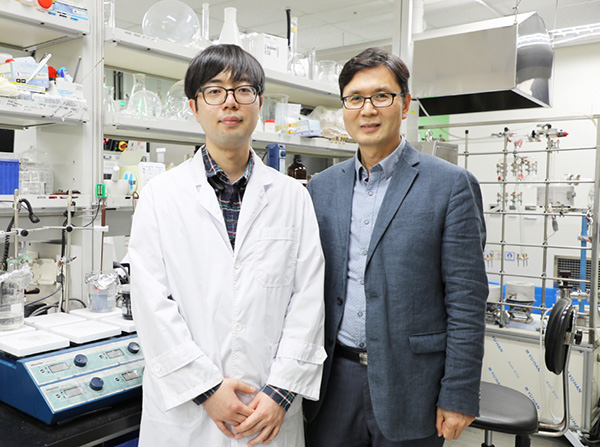Scientists from the Daegu Gyeongbuk Institute of Science and Technology (DGIST) have developed a silica-based cathode for lithium-sulfur batteries, which they say could enable batteries that last for over 2,000 charge/discharge cycles.
Lithium-sulfur batteries (LSBs)—composed of a sulfur-based cathode and lithium anode submerged in a liquid electrolyte—are promising candidates to replace lithium-ion batteries because of their low cost, non-toxicity and the abundance of sulfur. But using sulfur in batteries is tricky for two reasons. First, during the discharge cycle, soluble lithium polysulfides (LiPS) form at the cathode, diffuse into the electrolyte, and easily reach the anode, where they progressively degrade the capacity of the battery. Second, sulfur is non-conducting, so a conductive and porous host material is required to accommodate sulfur and simultaneously trap LiPS at the cathode. In the past, carbon-based host structures have been explored because of their conductivity. However, carbon-based hosts cannot trap LiPS.


In a recent study published in Advanced Energy Materials, DGIST scientists proposed a novel host structure called “platelet ordered mesoporous silica” (pOMS). What is unusual about their choice is that silica, a low-cost metal oxide, is actually non-conducting. However, silica is highly polar and attracts other polar molecules such as LiPS.
Upon application of a conductive carbon-based agent to the pOMS structure, the initial solid sulfur in the pores of the structure dissolves into the electrolyte, where it diffuses toward the conductive carbon-based agent to be reduced to generate LiPS. In this manner, the sulfur effectively participates in the necessary electrochemical reactions despite the silica’s non-conductivity. Meanwhile, the polar nature of the pOMS ensures that the LiPS remains close to the cathode and away from the anode.
The scientists also constructed an analogous non-polar, highly conductive conventional porous-carbon host structure to run comparative experiments with the pOMS structure. Professor Jong-Sung Yu, who led the study, remarked, “The battery with the carbon host exhibits high initial capacity that soon drops due to the weak interaction between non-polar carbon and LiPS. The silica structure clearly retains much more sulfur during continuous cycles; this results in much greater capacity retention and stability over as many as 2,000 cycles.”
According to the researchers, host structures for LSBs need not be as conductive as was previously thought. Yu commented, “Our results are surprising, as no one ever thought that non-conductive silica could be a highly efficient sulfur host and even outperform state-of-the-art carbon hosts.” This study broadens the selection of host materials for LSBs and could lead to next-generation sulfur batteries.
Source: DGIST


















































